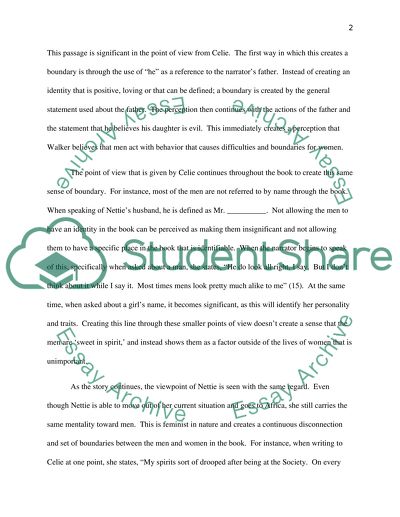Cite this document
(Creating Boundaries of Black Men in A.Walker's The Color Purple Book Report/Review, n.d.)
Creating Boundaries of Black Men in A.Walker's The Color Purple Book Report/Review. https://studentshare.org/ethics/1563470-the-color-purple-alice-walker
Creating Boundaries of Black Men in A.Walker's The Color Purple Book Report/Review. https://studentshare.org/ethics/1563470-the-color-purple-alice-walker
(Creating Boundaries of Black Men in A.Walker'S The Color Purple Book Report/Review)
Creating Boundaries of Black Men in A.Walker'S The Color Purple Book Report/Review. https://studentshare.org/ethics/1563470-the-color-purple-alice-walker.
Creating Boundaries of Black Men in A.Walker'S The Color Purple Book Report/Review. https://studentshare.org/ethics/1563470-the-color-purple-alice-walker.
“Creating Boundaries of Black Men in A.Walker'S The Color Purple Book Report/Review”. https://studentshare.org/ethics/1563470-the-color-purple-alice-walker.


